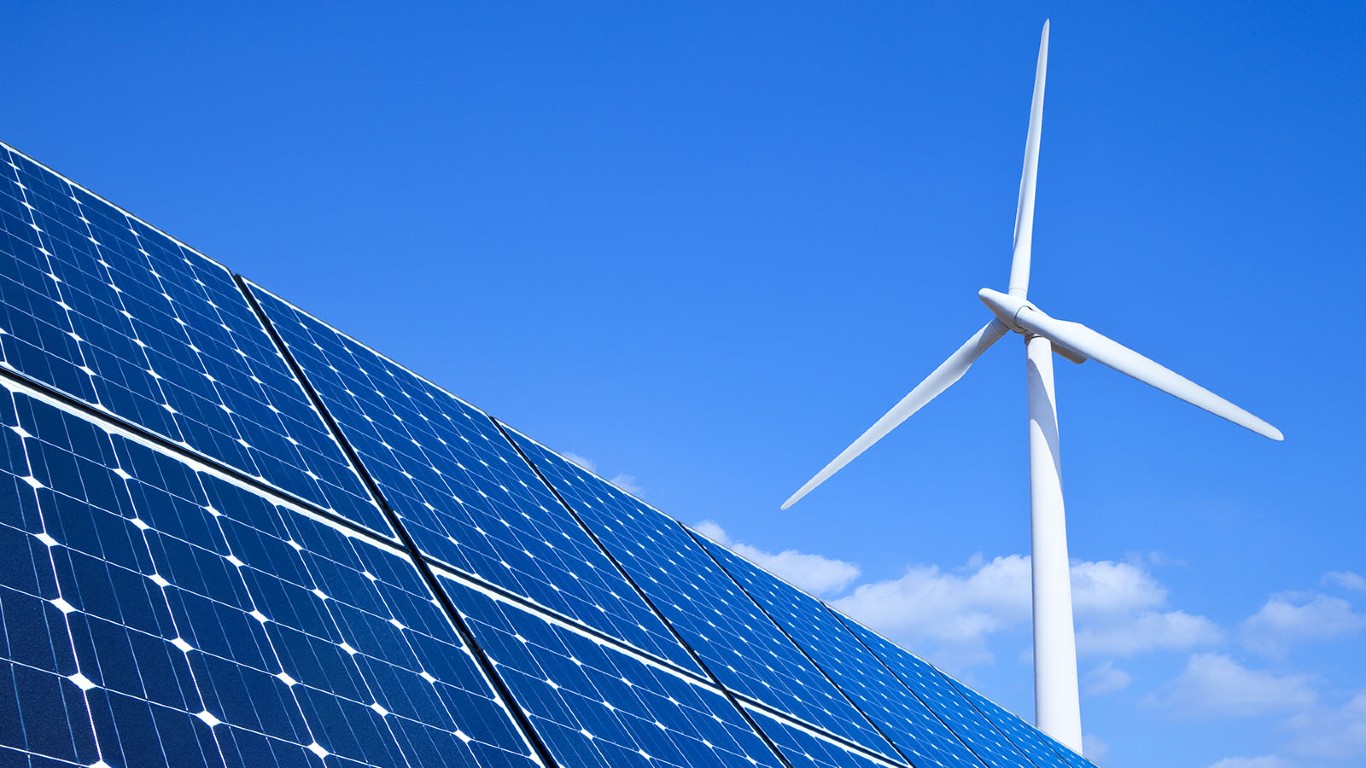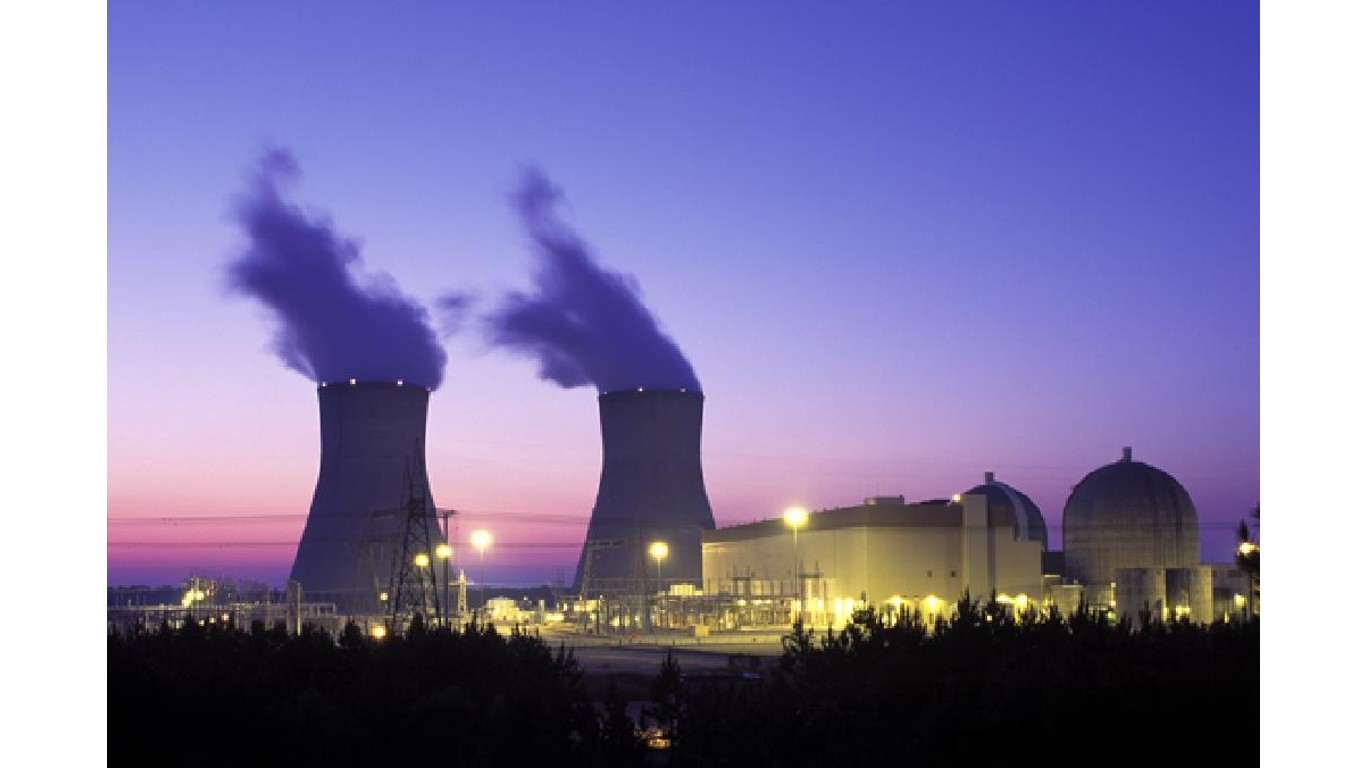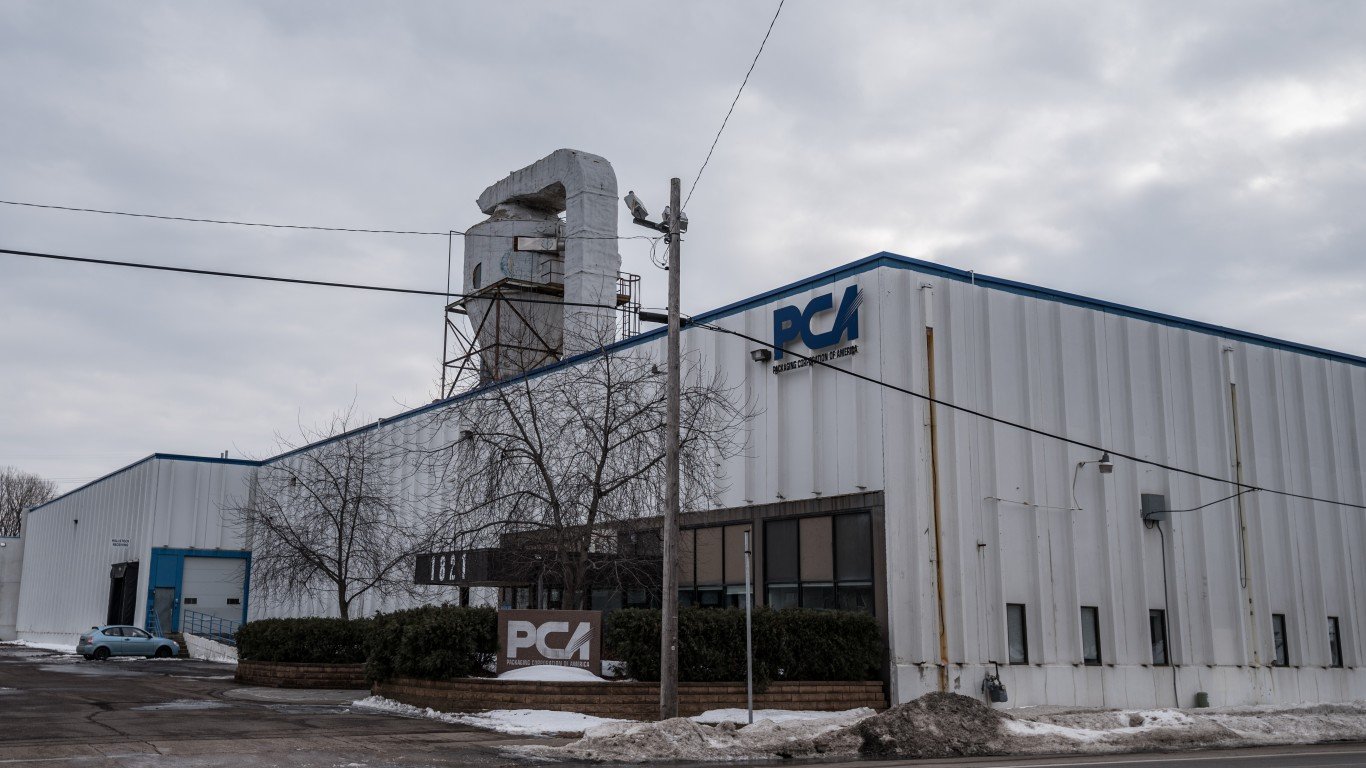
40. NiSource
> Toxic hazard (pounds released x toxicity): 364,539,913
> Environmental justice, poor population share 25% – #70 highest out of 100 corporations
> Environmental justice, minority population share 17% – #71 highest
> Pct. of toxic hazard from a single facility: 100% – #1 highest
NiSource is the parent company of six gas and electric utilities, including Nipsco, which operates in Indiana. Of Nipsco’s two power facilities, its Michigan City facility is responsible for 99.97% of the company’s water pollution. Nipsco is now focusing on closing its dirty coal-fired plants ahead of schedule and transitioning to renewables – wind and solar – and battery technology. In the meantime, Nipsco is replacing the coal that produces energy to meet peak demands with much cleaner natural gas.

39. Southern Company
> Toxic hazard (pounds released x toxicity): 371,666,196
> Environmental justice, poor population share 36% – #32 highest out of 100 corporations
> Environmental justice, minority population share 38% – #32 highest
> Pct. of toxic hazard from a single facility: 43% – #87 highest
Operating in Georgia and Alabama, two of Southern’s 10 electrical generating plants, the Barry plant in Alabama and the Wansley Steam Electric Generating Plant in Georgia, release most of the company’s most toxic wastewater – and it goes directly into surface waters. The main source of the contaminants is coal ash that has been stored in unlined landfills, which historically, were not required to be lined in some states.

38. Exxon Mobil
> Toxic hazard (pounds released x toxicity): 385,872,409
> Environmental justice, poor population share 38% – #25 highest out of 100 corporations
> Environmental justice, minority population share 78% – #5 highest
> Pct. of toxic hazard from a single facility: 25% – #98 highest
Among Exxon Mobil’s chemical plants, refineries and terminals, four facilities discharge 90% of the company’s wastewater. Three of these are upstream of large minority populations: 82% of the population around Exxon’s Baton Rouge chemical plant is black, 55% of the population around its Beaumant, Texas, plant is minority, and 50% of the population downstream the Baton Rouge Refinery is minority, predominantly black. Over a third of the population in each of these locations lives in poverty.
37. Packaging Corporation of America
> Toxic hazard (pounds released x toxicity): 401,771,594
> Environmental justice, poor population share 46% – #5 highest out of 100 corporations
> Environmental justice, minority population share 18% – #67 highest
> Pct. of toxic hazard from a single facility: 54% – #81 highest
Packaging Corporation of America operates six containerboard mills and two white paper mills, each in a different state, and all but one of the mills is in locations with high poverty rates, ranging from 29.4% to 52.6% of the population surrounding the various plants. The company releases all of its million plus pounds of toxic wastewater directly into surface waters.

36. PPL Corp.
> Toxic hazard (pounds released x toxicity): 419,448,015
> Environmental justice, poor population share 34% – #44 highest out of 100 corporations
> Environmental justice, minority population share 7% – #86 highest
> Pct. of toxic hazard from a single facility: 91% – #49 highest
PPL operates electric generating plants in Kentucky, one of which, the Ghent coal-fired plant, is responsible for over 90% of the company’s toxic wastewater releases. The water pollution emanates from unlined coal ash pits that have been storing coal ash at the facility since 1974, currently at the rate of 5.5 million tons of ash a year, spread over 800 acres.

 24/7 Tempo
24/7 Tempo





